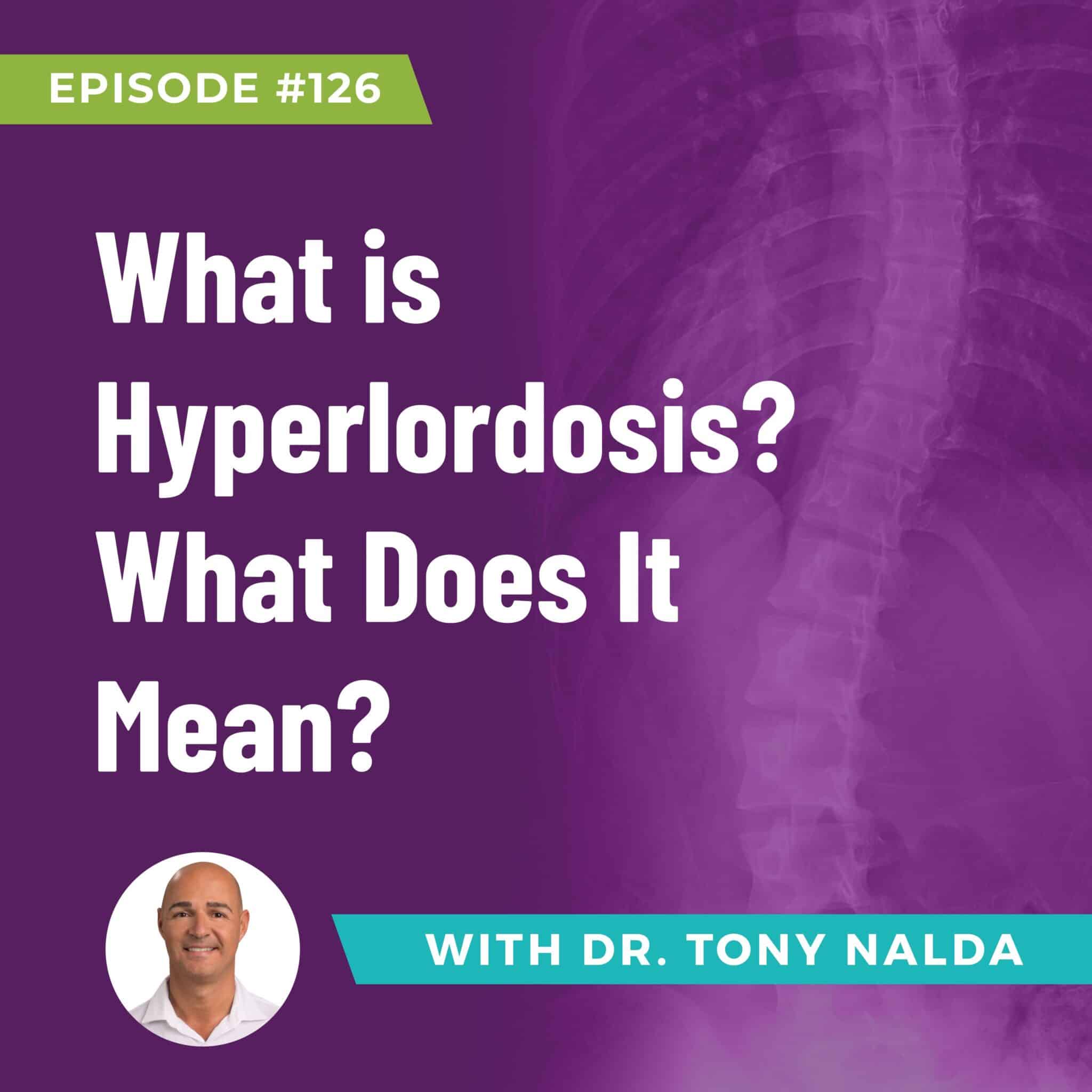Episode 126: What is Hyperlordosis? What Does It Mean?
Table of Contents
Understanding Hyperlordosis and Its Relationship with Scoliosis
Welcome to "Scoliosis Treatment with Dr. Tony Nalda," where we explore complex spinal conditions and their treatments. Today, we delve into a common condition often found alongside scoliosis—hyperlordosis.
What is Hyperlordosis?
Hyperlordosis refers to an excessive inward curve of the spine, typically seen in the lumbar region. This condition is distinct from scoliosis, which involves a lateral curvature of the spine with a rotational component. Hyperlordosis results in what is often described as a "swayback" appearance, where the abdomen protrudes forward while the buttocks stick out backward.
Normal Spinal Curvatures vs. Hyperlordosis
The human spine naturally forms several curves, which help to absorb shock, support the weight of the head, and align the body properly. These include:
- Lordosis: Curves inward at the neck (cervical) and lower back (lumbar).
- Kyphosis: Curves outward in the upper back (thoracic).
Hyperlordosis is essentially an exaggeration of the normal lordotic curve in the lumbar region, leading to an increased arching of the lower back.
Causes and Implications of Hyperlordosis
Hyperlordosis can develop due to various factors, including:
- Lifestyle and Habits: Sedentary activities can weaken the abdominal muscles, placing more strain on the lower back.
- Obesity: Carrying extra weight, particularly around the abdomen, can pull the spine forward, creating a deeper lumbar curve.
- Neuromuscular Conditions: Certain conditions like muscular dystrophy and cerebral palsy can disrupt muscle balance around the spine.
This condition is not only a postural issue but can also lead to discomfort and lower back pain due to the abnormal stress placed on the spine.
Hyperlordosis and Scoliosis
Patients with scoliosis frequently present with hyperlordosis, possibly due to the compensatory mechanisms of the body trying to maintain balance and alignment. The exact relationship between scoliosis and hyperlordosis isn't fully understood, and it remains unclear whether one condition predisposes someone to the other or if they develop independently based on similar risk factors.
Management and Treatment
Treating hyperlordosis involves several strategies aimed at reducing the excessive curvature and strengthening the core to support proper spinal alignment:
- Physical Therapy: Exercises that strengthen the abdominal and back muscles can help in reducing the lordotic curve.
- Lifestyle Changes: Weight management and incorporating activities that encourage movement and flexibility can be beneficial.
- Avoidance of Aggravating Activities: Sports or activities that exacerbate the lordotic posture, such as gymnastics and certain forms of dance, should be approached with caution or modified to prevent worsening of the curve.
Special Considerations for Adolescents
In young individuals, especially girls who are more prone to both scoliosis and hyperlordosis, proactive measures are essential. Monitoring spinal development during growth spurts and intervening early with physical therapy or lifestyle adjustments can prevent the progression of these conditions.
Conclusion
While hyperlordosis and scoliosis can co-occur, addressing them early and effectively can lead to better spinal health and prevent further complications. Understanding the dynamics of spinal curvatures and the impact of lifestyle factors plays a crucial role in managing these conditions.
For more insights into spinal health and to keep up with the latest discussions on scoliosis and related conditions, subscribe to our podcast and stay informed about how to manage and treat these spinal deviations.
Artlist.io 847545
Podcast: Play in new window | Download
Subscribe: RSS
Dr. Tony Nalda
DOCTOR OF CHIROPRACTIC
After receiving an undergraduate degree in psychology and his Doctorate of Chiropractic from Life University, Dr. Nalda settled in Celebration, Florida and proceeded to build one of Central Florida’s most successful chiropractic clinics.
His experience with patients suffering from scoliosis, and the confusion and frustration they faced, led him to seek a specialty in scoliosis care. In 2006 he completed his Intensive Care Certification from CLEAR Institute, a leading scoliosis educational and certification center.
About Dr. Tony Nalda
 Ready to explore scoliosis treatment? Contact Us Now
Ready to explore scoliosis treatment? Contact Us Now








